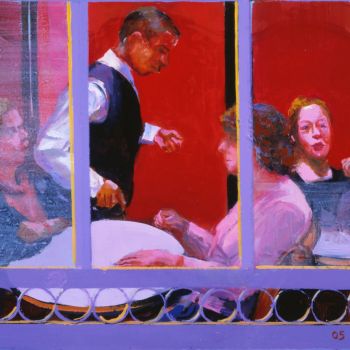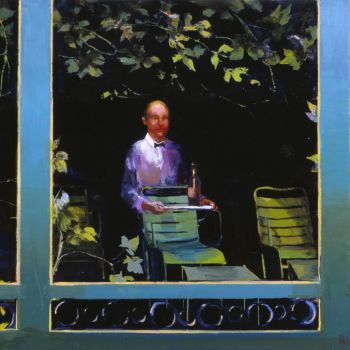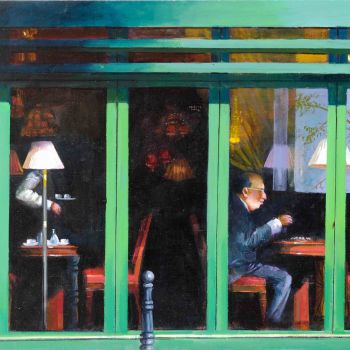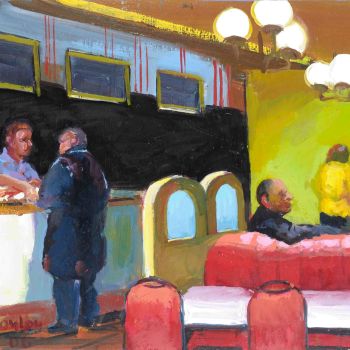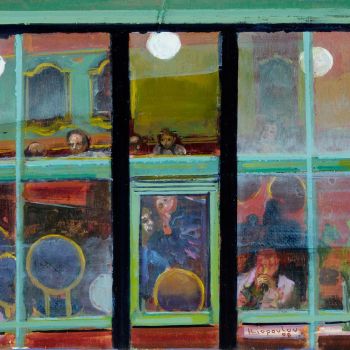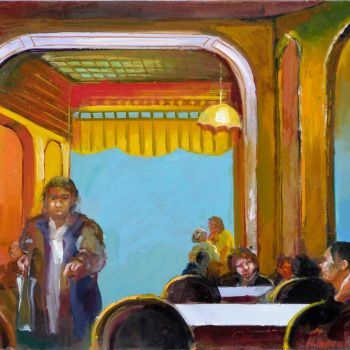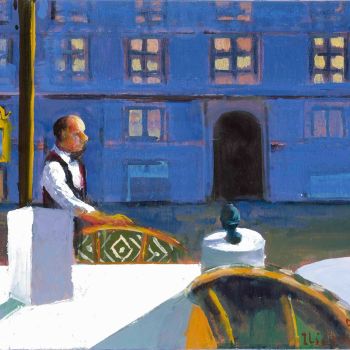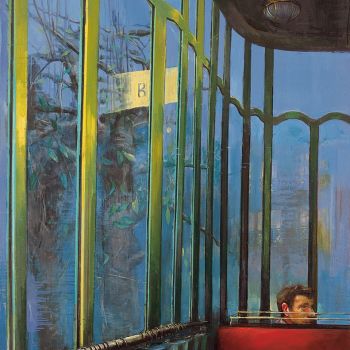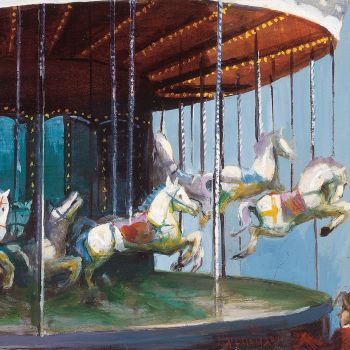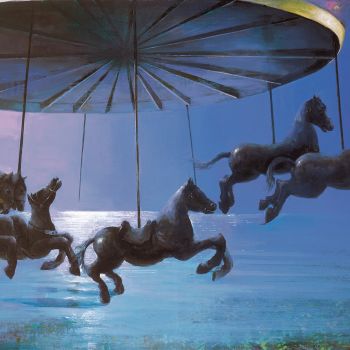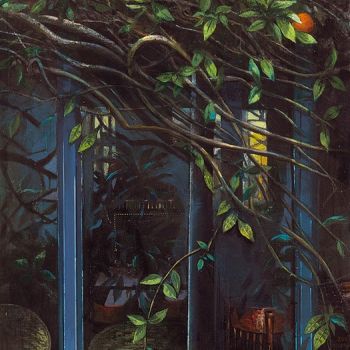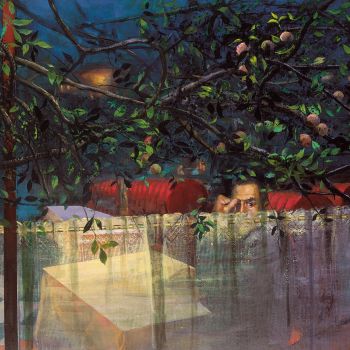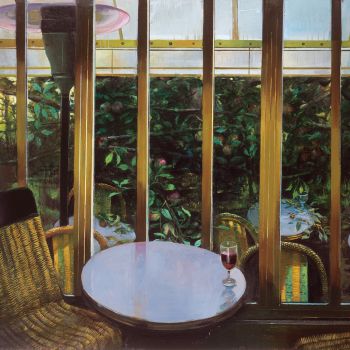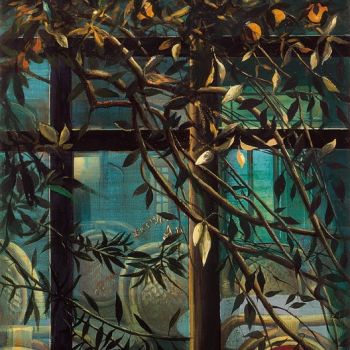For me Irini is an old friend with whom I became acquainted through her wintry vineyards, gardens full of dew and moss at dusk, marshes the color of the sky, movie houses and theater halls draped in decadent imperial purple. Moreover, her royal purple hues provided the occasion several years ago to explore a fertile question about her entire body of work. Back then she had conveyed a sense of these halls in her canvases through a singular calibration of silence. At least that’s how those hushed ensembles observed behind steamy windows at odd hours imprinted themselves on my memory. Morning hours, most probably. And they immediately revived in me a nostalgia for childhood curiosity as regards the debunked magic of these entertainment halls when I observed them without visitors, with no activity, with a justifiable compassion for their forsaken magnificence.
I had already fabricated my own scenarios while beholding her exhibition with these theaters and ever since I’ve kept an eye out for her, knowing in advance that she would continue being revealing in the significant halftones that enchant me in her painting. A painting of figurative enigmas and especially important for this very reason.
All her works had an imposing mathematical ambiguity that I the writer – with absolutely no gift for mathematics and a complex because of the suspicion that significant aesthetic coordinates escape me due to my weaknesses – over time I have learned to detect the signifier with my “seventh” sense. It is a sense that drew its alibi from the elaborate only. And I encountered the elaborate in question in an aggressively beautiful way in her works.
Works that are confident in their subjects – works that yearn for – at least for me this has become obsessive – one way or another an intuitive collaboration with the public. Ostensibly they offer a subject with clarity however behind the certitude hides the pleasure of the puzzle. Her own playful craftsmanship.
And at this point I must enlist my “seventh” sense, squash my lamentable mathematic past and come up with a way to approach the dramatic solutions of her works. As I said earlier, paintings of genuine precision and trapped in the sensibilities of an explosive chromatic approach. Perhaps painters like to be misinterpreted by the public that is usually eager to succumb to its own omnipotent subjectivity. And why not?
In my case I would like to believe that the work of Irini is rewarded by this subjective stance, but unwittingly the two of us also found common ground for communication through writing. Writing is my turf.
As such two or three years earlier when I was writing the novel The Turk in the Garden and while I was struggling with the tangle of my inventions and rather tough characters with dangerous talents and the strains of a language resembling Turkish … the previous exhibition of Irini emerged. And there in the rich restive chlorophyll of her paintings I found my “tomatoes.” Without me knowing, without her knowing. It was so amazing for precisely that reason. How we encountered one another in a popular – and perhaps unpainterly – vegetable that nevertheless consisted in the key to our inspirations. For Irini tomatoes were another fruitful occasion for redefining her highly evolved sensibility for nature. For me they were a fundamental component of the mysteries of my book. When I saw them in her paintings, I was certain thereafter of the mystic connection between us and in this way the characters in my Garden tasted the aggressive tomatoes in generous portions with the extra ingredients that I added.
In the end I am unable to dismiss the suspicion that red is the color that connects me to the work of Irini Iliopoulou. Incidentally of course because I am especially impulsive and greedy before the chlorophyll which is so mysteriously fascinating and frames her prolific imaginings. Sometimes in gardens conquered by love of a hidden life that pulsates, sometimes like an element that is vitally anxious as well as protective of her main subject.
For all these reasons I love her work and I am surprised every time I find myself standing before the “avowedly elaborate” where the urge for surprise lurks. A surprise that comes close to my wandering mood in lengthy works, works for which an admiring glance or a narcissistic interpretation-misinterpretation do not suffice, works that are quickly absorbed by the all-powerful composure of the wall.
Irini’s works erode the horizon, perhaps because they remain dangerously wet far beyond the gaze and open to the audacity of the viewer who suspects the magnetic undercurrents in her scenarios even if the supporting wall must be torn down.
Yiannis Xanthoulis


